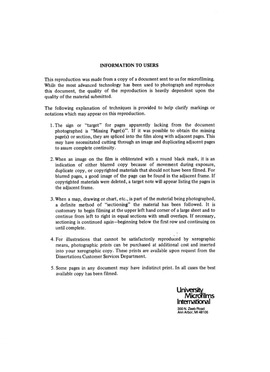| dc.contributor.author | Van Wie, Bernard John, | en_US |
| dc.date.accessioned | 2013-08-16T12:28:45Z | |
| dc.date.available | 2013-08-16T12:28:45Z | |
| dc.date.issued | 1982 | en_US |
| dc.identifier.uri | https://hdl.handle.net/11244/5041 | |
| dc.description.abstract | Engineering approaches to the efficient separation of blood components have been conceptualized and evaluated. The approaches studied have included the processing of blood at reduced hematocrits, processing through stages in series or multistage apparatuses, and recycle processing. Evaluation of conceptualized separation processes has been aided by the construction of a continuous seal-less centrifuge using a two-staged spiral blood chamber rotor. Preliminary design data have revealed that such approaches have great potential for enhancing cell yields and improving separation efficiencies. The project emphasis has been on the separation of leukocytes and erythrocytes, but the concepts developed have been expected to be readily applicable to the separation of platelets, specific leukocyte types (granulocytes, lymphocytes, monocytes and stem cells), reticulocytes and gerocytes, and other cellular species. | en_US |
| dc.format.extent | xv, 228 leaves : | en_US |
| dc.subject | Engineering, Chemical. | en_US |
| dc.title | Conceptualization and evaluation of techniques for centrifugal separation of blood cells : | en_US |
| dc.type | Thesis | en_US |
| dc.thesis.degree | Ph.D. | en_US |
| dc.thesis.degreeDiscipline | School of Chemical, Biological and Materials Engineering | en_US |
| dc.note | Source: Dissertation Abstracts International, Volume: 43-06, Section: B, page: 1917. | en_US |
| ou.identifier | (UMI)AAI8225518 | en_US |
| ou.group | College of Engineering::School of Chemical, Biological and Materials Engineering | |
